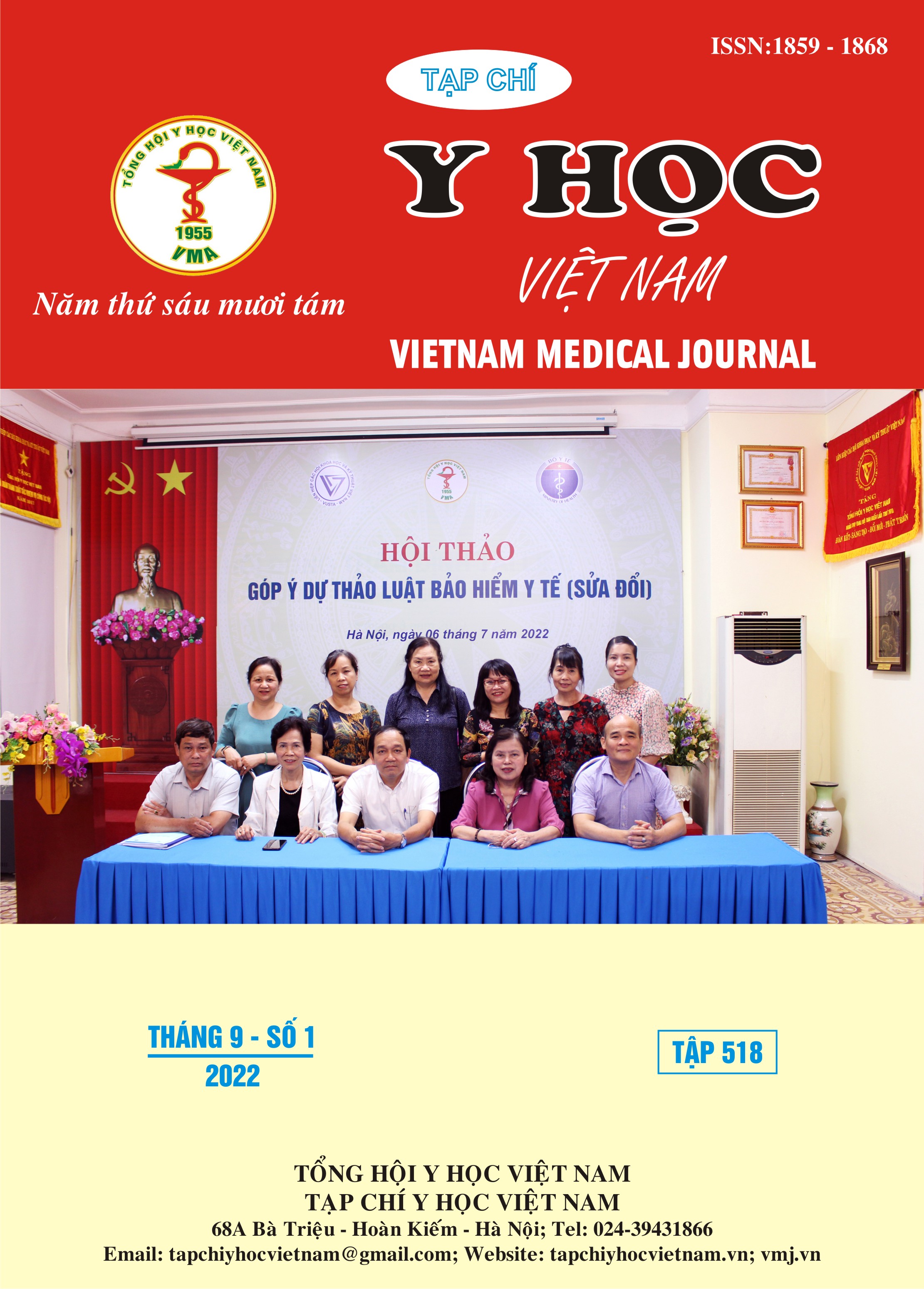CONDITION OF BLOOD GLUCOSE CONTROL IN TYPE 2 DIABETES PATIENTS WITH GLOMERULAR FILTRATION RATE < 60 ML/MINUTE /1.73M2
Main Article Content
Abstract
Objectives: To evaluate blood glucose control status in patients with type 2 diabetes with glomerular filtration rate <60ml/min/1.73m2. Subjects and methods: A cross-sectional descriptive study was conducted on 50 patients with type 2 diabetes who had an outpatient examination at Huu Nghi Hospital from January 2022 to June 2022 with glomerular filtration rate < 60 ml/ min/1.73m2 after excluding patients with anemia, acute infection, acute complications, acute exacerbation of chronic renal failure, hemodialysis patients. Criteria to evaluate fasting blood glucose, HbA1C according to the guidelines of ADA-2021.Results: Mean age:76.94 ± 6.04; Male accounted for 84%, female accounted for 16%. The rate of HbA1C of the study group was on target (HbA1C≤ 7%) and acceptable (HbA1C from 7- ≤8%) 38% and 24%, respectively. Poor HbA1C control rate (>8%) of CKD stage 3a; stage 3b is 37.5% respectively; 40%. The ratio of fasting blood glucose of the study group reached the target (fasting GM 4.4-7.2 mmol/l) and acceptable (fasting GM 7.2- ≤ 8.3mmol/l) respectively 14% and 28%. Target HbA1C control rate; the poor of the group with the disease ≤ 10 years and > 10 years were (60% and 23.3%, respectively); (20% and 50%) the difference was statistically significant (p=0.026). Mean value of HbA1C; Fasting blood glucose of the 2 groups of CKD stage 3a and CKD stage 3b was not statistically significant (p respectively 0.52; 0.66). Conclusion: Target HbA1C control rate; the poor of the group with the disease ≤ 10 years and > 10 years were (60% and 23.3%, respectively); (20% and 50%) the difference was statistically significant (p=0.026). The rate of HbA1C control in patients with typ 2 diabetes with glomerular filtration rate < 60ml/min/1.73m2 was statistically significantly associated with disease duration.
Article Details
Keywords
Type 2 diabetes, glomerular filtration rate < 60 ml/min/1.73m2
References
2. The ADVANCE Collaborative Group (2008), “Intensive blood glucose control and vascular outcomes in patients with type 2 diabetes”, N Engl J Med, 358: 2560-2572.
3. Hahr AJ, Molitch ME. Management of diabetes mellitus in patients with chronic kidney disease. Clin Diabetes Endocrinol. 2015;1(1):2. doi: 10.1186/ s40842-015-0001-9
4. Tài liệu hướng dẫn chẩn đoán và điều trị đái tháo đường tip 2 theo qđ 5481/qđ-byt nagyf 30/12/2020. tài liệu hướng dẫn chẩn đoán và điều trị đái tháo đường tip 2 theo qđ 5481/qđ-byt nagyf 30/12/2020.
5. KDOQI Clinical Practice Guideline for Diabetes and CKD: 2012 Update. American Journal of Kidney Diseases. 2012;60(5):850-886. doi:10.1053/j.ajkd.2012.07.005
6. Association AD. Glycemic Targets: Standards of Medical Care in Diabetes—2021. Diabetes Care. 2021;44 (Supplement 1):S73-S84. doi:10.2337/ dc21-S006
7. Lê Thị Phương Huệ, Nguyễn Khoa Diệu Vân “Khảo sát tình trạng ha đường huyết và các yếu tố liên quan ở bệnh nhân đái tháo đường týp 2 có giảm mức lọc cầu thận < 60ml/phút”.
8. Lê Xuân Cảnh. Thực trạng kiểm soát gluocse máu và một số yếu tố nguy cơ ở bệnh nhân cao tuổi đái tháo đường typ2 điều trị ngoại trú tại bệnh viện Hữu Nghị. Published online 2017.
9. Subramanyam K, Gosavi S, Tenneti D, Murgod R. Evaluation of the Role of HBA1c in Chronic Kidney Disease. Journal of Clinical and Diagnostic Research. 2018;12:BC01-BC04.


